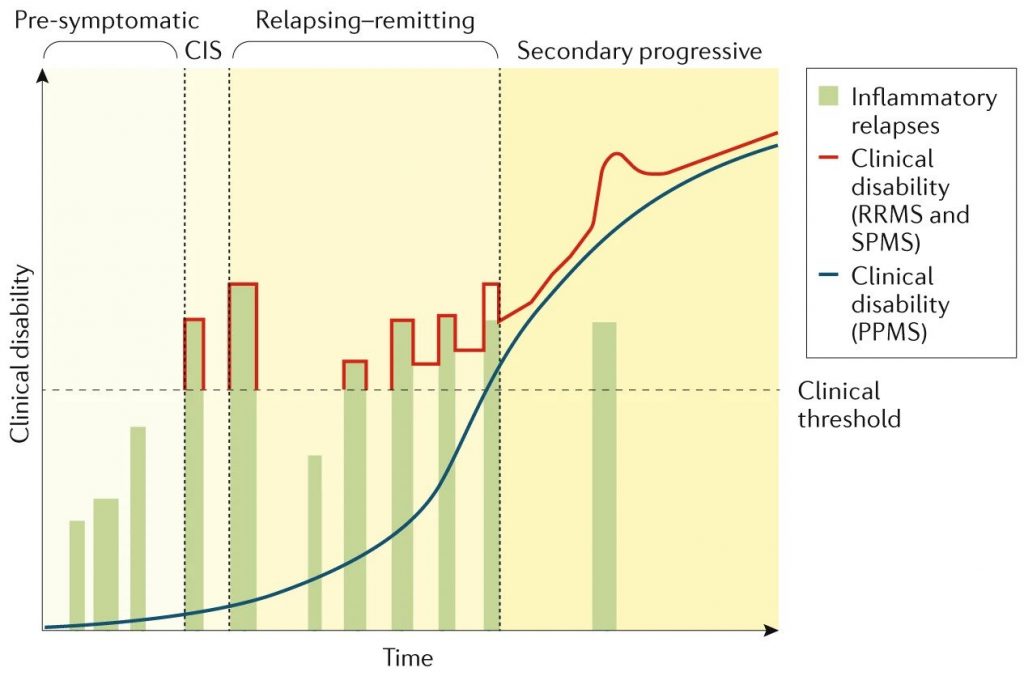19 3.1 What is Multiple Sclerosis?
By the end of this chapter you should be able to:
- Have a general understanding of Multiple Sclerosis (MS) and the role of the immune system
- Provide a rationale for Experimental Autoimmune Encephalomyelitis (EAE) as a mouse model for MS and evidence for the role of the microbiota in EAE
- Analyze studies illustrating the role of the microbiota in human MS patients and how to modify the microbiota using a diet intervention
- Understand the diet-associated changes of the microbiota and how they influence the immune response and disease progression
- Identify the limitations of current research on MS and propose future directions for advancing the treatment of MS
Introduction
Multiple Sclerosis (MS) is a devastating autoimmune disease characterized by the demyelination of neurons within the central nervous system. MS can manifest as a variety of symptoms including but not limited to vision problems, numbness, loss of coordination, and weakness. According to the MS Society of Canada, MS is highly prevalent, with an estimated 1 in every 385 Canadians living with this disease (MS Society of Canada, 2019). Among these individuals, females are 2-3 times more likely to be affected compared to males. Despite its high prevalence, there is currently no cure for MS. Although it is known that MS is susceptible to both genetic and environmental factors, the causes of MS are still largely unknown.
Currently, MS is one of the leading causes of neurological disability in young adults, predominantly affecting individuals between the ages of 20-40 (Constantinescu & Gran, 2014). The majority of these patients have Relapsing-Remitting MS (RRMS) which is characterized by relapses followed by periods of remission. 50% of these patients can then go on to develop Secondary Progressive MS, where there is a gradual progression of the disease in the presence or absence of symptoms. Finally, the minority of MS patients are progressive from onset (Primary Progressive MS) or progress with periods of relapse (Progressive Relapsing MS) (Constantinescu & Gran, 2014).

